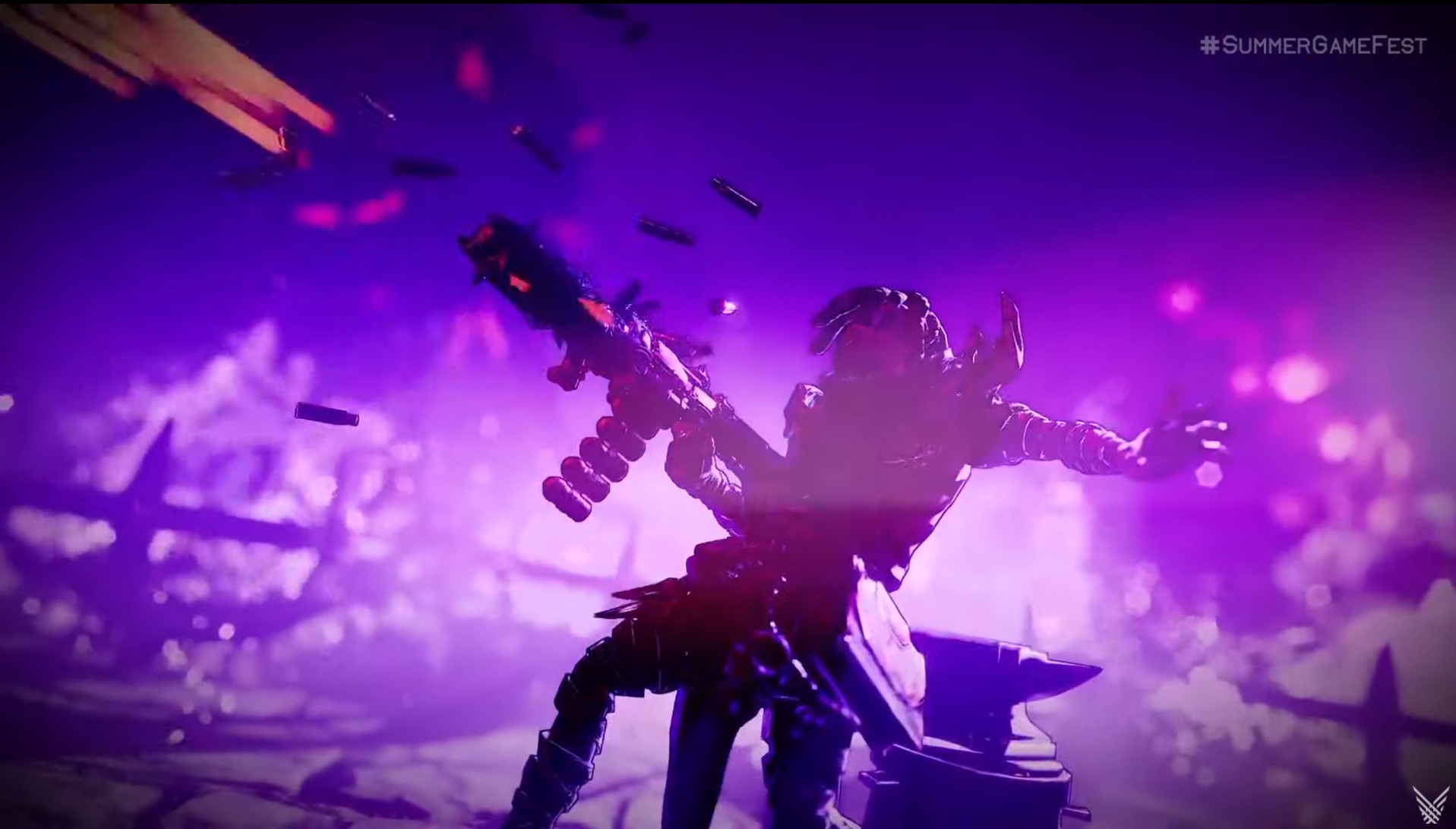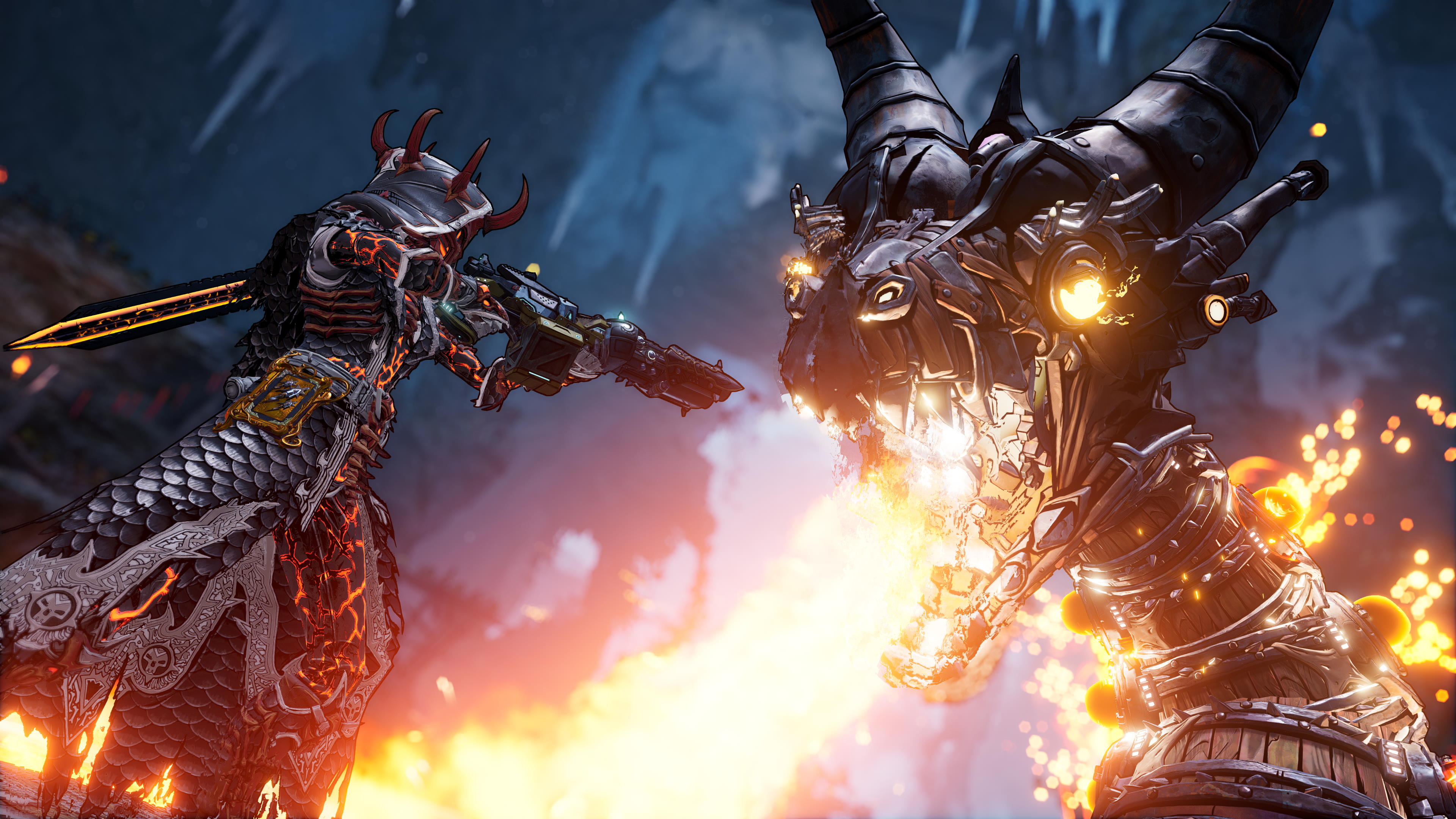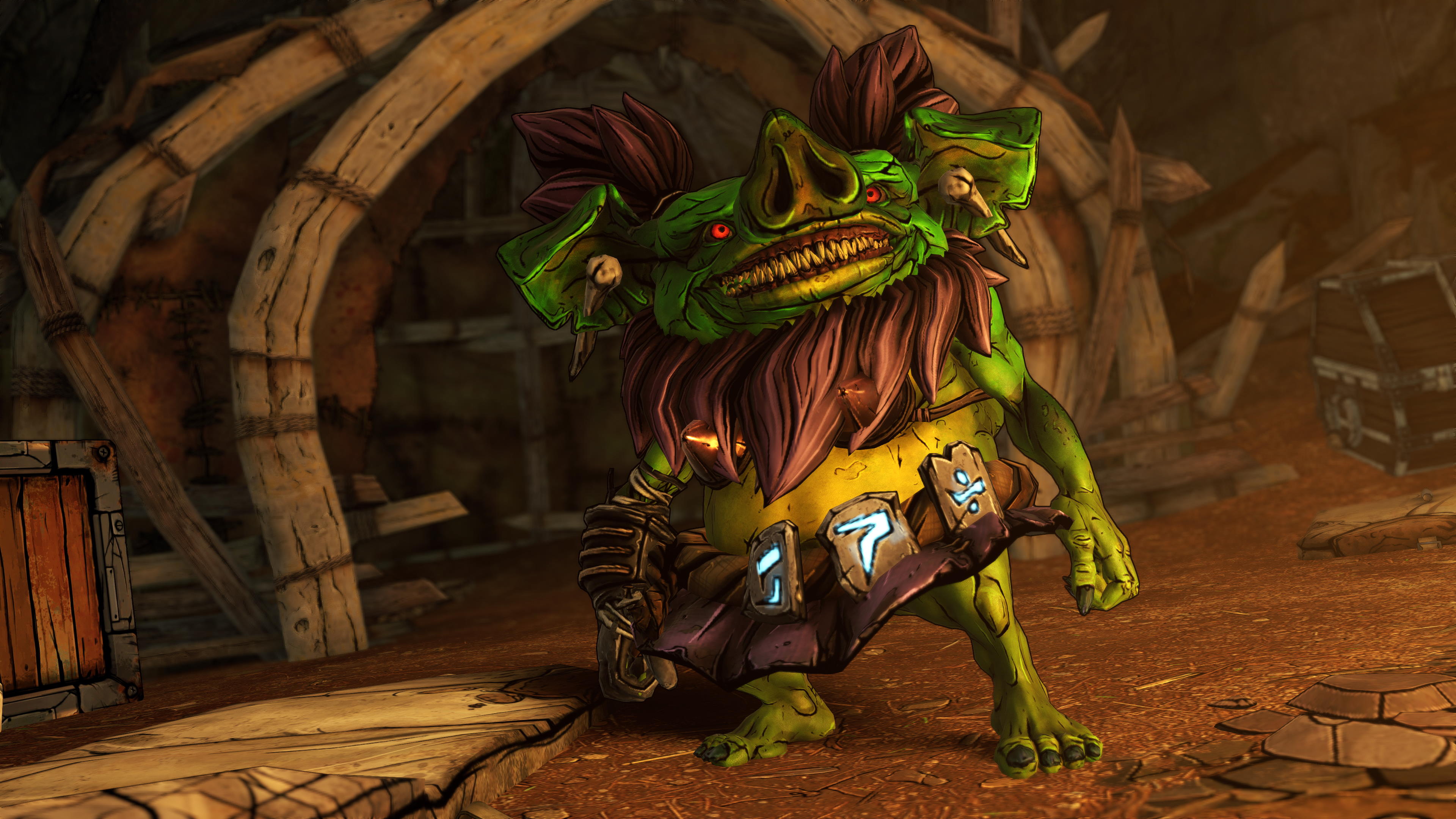Tiny Tina’s Wonderlands offers charm instead of innovation
Shooting, with a smile

Tiny Tina’s Wonderlands is a difficult game to recommend – it lives up to its ambitions as a star-studded fantasy-themed Borderlands spin-off. Still, it sticks so closely to the series’ formula that it inevitably inherits many of its unresolved problems.
If you just want to play more of the same game that you’ve been enjoying since 2009, then you’re set. Franchise veterans should enjoy blasting through Wonderlands’ campaign, with its familiarly spongy boss battles, rote puzzles, and endless hordes of enemies. If it ain’t broke, don’t fix it, and Borderlands does not need fixing - it’s still the most moreish shooter on the market.
But if you haven’t latched on to a Borderlands game since its golden era in the early 2010s, there aren’t any sweeping changes here that will hook you back in, which can make Wonderlands feel like a waste of time.
You’re still going to spend most of the game trudging through linear areas, blasting through a limited pool of enemy types to trigger a door opening to enter another area to do the same thing again. Your reward, as per usual, is copious amounts of loot and a cavalcade of jokes that consistently land. Of course, there are open-world activities, but Wonderlands doesn’t use the space to its advantage. It gets pretty lonely, and if you’re playing solo, it devolves into the same old same old.
Age before beauty

Graphically, Tiny Tina’s Wonderlands is a peach. Crumbling castles provide verticality and scale. Wonderlands also looks great up close, with countless fantasy decals and tweaked reused assets helping diversify environments and wacky guns from each other. The game’s technological advances are best shown with dungeon master Tiny Tina’s omnipotent ability to build up or break down the world whenever she wants, like swapping trees for mushrooms or steeping an area in a completely different ambiance.
Wonderlands is a gigantic, gorgeous AAA shooter with a big budget, but it never feels like more than warmed-up DLC
Wonderlands wheels out plenty of antique characters to deliver their usual gags as you might expect. While they are still funny, the reliance on nostalgia undermines the game’s sense of identity. Wonderlands is a gigantic, gorgeous AAA shooter with a big budget, but it never feels like more than warmed-up DLC. It tastes good like a limited edition burger at McDonald's, but the novelty soon fades.
While Gearbox appears unwilling to tamper with its darling money-maker gameplay loop, the developer will dress it up in a fancy outfit. Ashly Burch (in fine form as Tiny Tina) is joined by Andy Samberg, Wanda Sykes, and Will Arnett. This ensemble cast of celebrity comedians doesn’t phone it in, but you hear their presence rather than feel it. As talking heads, they lift you out of the despondency pit when you’ve been pushing through gnarly grunt work.
Get daily insight, inspiration and deals in your inbox
Sign up for breaking news, reviews, opinion, top tech deals, and more.
Old habits die hard

While it doesn’t stack up against the surprising emotional dramedy of Borderlands 2, the quality voice acting helps make the story of Wonderlands a nice, if not wholly worthwhile detour. Mostly, it harbors an endearing moral about how tabletop games nurture friendship and self-expression, with some solid character moments to break up the potentially nauseating amount of irreverence. We found it more charming than groan-worthy, but your mileage may vary.
But as much as Tony Tina’s Wonderlands can make you laugh, it can make you cry, too, and not because of the story. Managing the seemingly endless amount of junk in your inventory and swapping between all of the different pieces of kit is the most nightmarish holdover from previous Borderlands games. Figuring out the best item for every slot is as complex as ever, and running out of inventory space (which you will frequently do) was enough to make us want to switch the game off. To avoid the busy work, we resorted to equipping loot rather than picking through items to make the best build – we still had to do plenty of it. The consolation of this playstyle is that we were constantly switching tactics, which meant we got to play with plenty of the game’s guns, which are still as exciting to use.

Tiny Tina’s Wonderlands feels hard to justify if you’re not already a Borderlands fan anticipating it
If you thought that being able to build your own character would offer some kind of extra meaningful class specialization, then I’m afraid to say it’s not all that complex. Fun archetypes and mid-game pivots aside, you’re still choosing a playstyle to stick to, even if you can make the hero look however you want. In Borderlands 2, three trees gave each class a playstyle you could make your own. Here there is one tree per class with a clear direction, enhanced by your second class choice later in the game. This didn’t mean we thought our Mushroom Companion was any less precious, though, with its toxic farts and tenacious reviving abilities.
Our most anticipated feature was the overworld, a giant tabletop board that sits on top of the main game and appeared to offer some extra depth. Unfortunately, it’s mostly obstacles and random battles in tall grass. If you were bored of the loop in the main game, imagine being pulled outside of it only to be nagged by mobs and dropped into repetitive encounters that you’re forced to clear.
With so many other strong games orbiting its release, Tiny Tina’s Wonderlands feels hard to justify if you’re not already a Borderlands fan anticipating it. This game gets by on a lot of good grace from previous entries, and an armory full of charming jokes. It has managed to deliver what it set out to achieve, but the lack of meaningful new features only makes its ancient holdover systems feel more frustrating.
Jordan Oloman is a journalist and documentarian with experience across the pop culture/tech spectrum writing reported features, reviews. news, guides, op-eds and more for a wide variety of outlets. He is also an affiliate streamer on Twitch and have previous experience in scriptwriting, podcasting, game consultation and creating video content.
